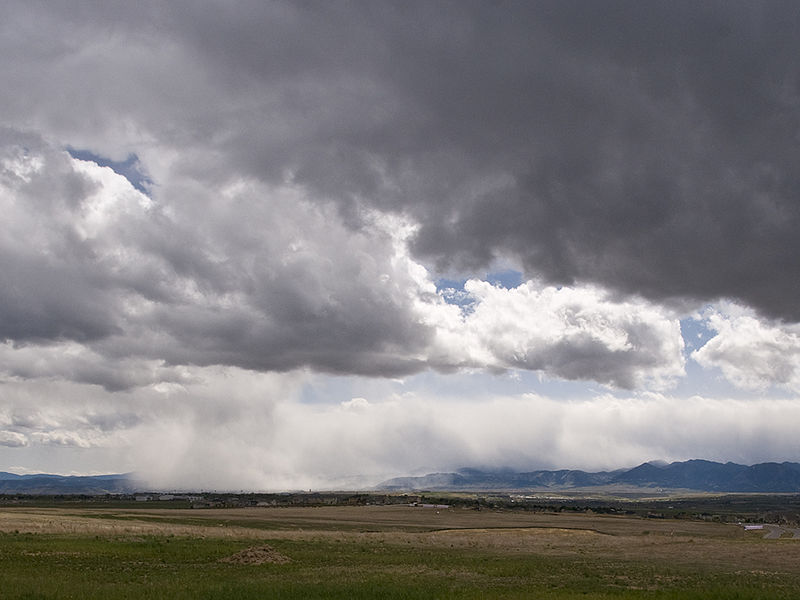With Colorado’s population growing and the constant need for water, one would think that rural farmers and landowners would be positioned against the state’s larger municipalities. However, just the opposite is true in many cases, and the recent Larimer County-Broomfield Project is the perfect example. This project is the state’s first permanent agricultural-municipal alternative transfer method (ATM) project. The deal for this project closed back in August and will hopefully inspire similar projects in the future.

ATMs offer an alternative to “buy and dry” methods. Photo courtesy of jtsmmm.
ATMs, promoted by the 2015 Colorado Water Plan, are an alternative to the traditional “buy and dry” approach for growing municipalities to obtain the new water supplies they need to satisfy their customers. An ATM allows farmers to lease water that they would have used for irrigation to municipalities in drought years when urban supplies run short. During years of abundant water supply, the farmer would still use the water to irrigate the farm.
“This project is important as it brings the land conservation community [Larimer County Open Lands Program] together with a municipal water provider [Broomfield] to leverage each entities’ financial resources,” says Todd Doherty, the president of Western Water Partnerships. Western Water Partnerships is a Colorado Public Benefit Corporation with the mission of conserving irrigated agricultural properties by facilitating water-sharing agreements between farms and ranches and municipal water providers and local governments.
Larimer County has shown a strong interest in preserving open spaces, mostly farms and ranches, as it acts as a gateway to some amazing views of Roosevelt National Forest and Rocky Mountain National Park. The City of Broomfield was looking for other water resources as the city continues to grow rapidly. In 2016, these two entities came together to form a deal that benefited both of their interests.
The Colorado Water Conservation Board (CWCB) provided a grant to Larimer County to hire the Western Water Partnership team to help develop the water-sharing agreement with a local municipal water provider. Larimer County purchased the Malchow Farm, a 211-acre farm near Berthoud, Colorado, for $8.4 million in August 2016 when the property appeared back on the market after a contract with a developer fell through. The purchase included 240 units of Colorado-Big Thompson (C-BT) Project water, worth $6.5 million at the time of sale.
While the price tag exceeded the Larimer County Open Lands Program’s annual appropriation for land acquisition and they borrowed from another department to close on the purchase, the idea was that the opportunity to develop a water-sharing agreement with the C-BT water would help reimburse the County a fair amount of the purchase price. The fact that C-BT water can be moved around Northern Water’s district boundaries, which encompasses 1.6 million acres in portions of eight counties, made this an ideal opportunity to develop an interruptible water supply agreement as it didn’t have to go through water court, says Doherty.

Larimer County purchased the Malchow Farm near Berthoud, Colorado in August 2016. Photo courtesy of Walter Powers.
After discussions with many municipal water providers, Larimer County was able to strike a deal with the City and County of Broomfield. Broomfield paid $3.77 million dollars for a package deal that included: (1) an interruptible water supply agreement on 80 C-BT units and (2) the purchase of 115 C-BT units with the ability for Larimer County to lease-back. For the interruptible water supply agreement, Broomfield is legally allowed to call for the water in 3 out of 10 years and by contract is required to pay $18,000 during those years. The total payment Larimer County receives will cover almost half of the funding for the farm purchase. Some of the money will be used by Larimer County in drought years to acquire other water rights so the farm can still be productive when Broomfield does call for the water.
It seems like an obvious win-win. So then why aren’t there more of these in Colorado? For one, every agricultural producer, county government, and municipality has specific needs that must be met in order to be successful in achieving their desired outcomes. These projects require many risks, moving parts, and consultants. Some remain wary of ceding control or of attempting to pursue a complex agreement. “The water community is a conservative group in general … The time and complexity associated with these projects can be daunting to some,” Doherty says. “We found the right municipality, and the water managers were progressive.”
However, this project didn’t come without its challenges. As an example, Doherty says, “It was difficult to come up with the price for the dry-year payment value.”
Grants from agencies like the CWCB greatly help projects like this one by not only providing funding, but also offering a team of smart and dedicated people that can help get the job done, says Doherty. This project has also been successful in bringing members of the water community and the land conservation community together in way where both of their interests are met. “Hopefully others will learn from this and these types of projects will become commonplace” Doherty says.

 Print
Print